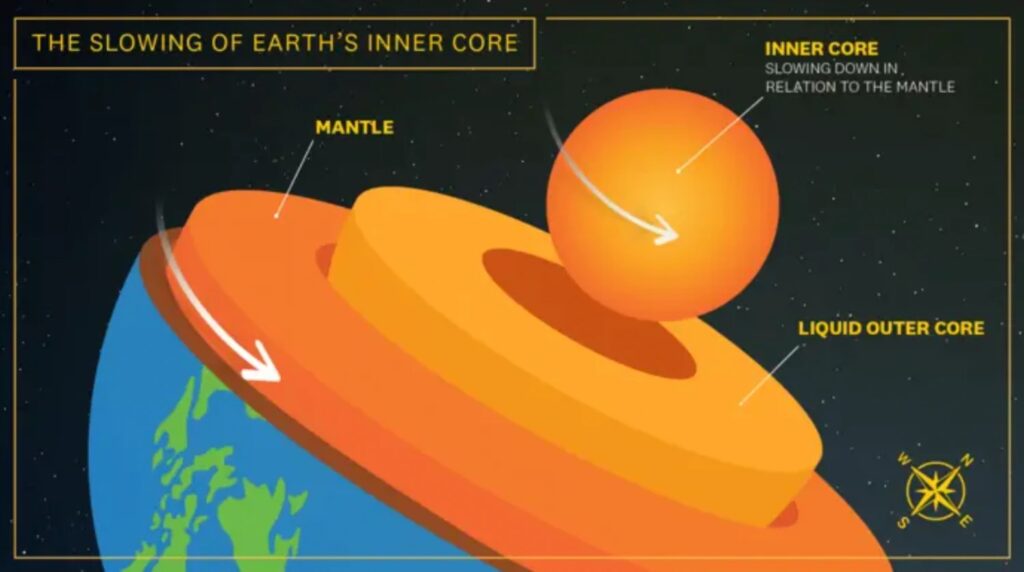Researchers have confirmed that the Earth’s inner core is slowing down relative to the planet’s surface, which could affect the length of a day.
This deceleration resolves a long-standing scientific debate.
Contrary to earlier studies suggesting the inner core spins faster than the surface, recent findings from USC indicate that the slowdown began around 2010, with the inner core now lagging behind the Earth’s surface.
John Vidale, a professor at USC, initially found seismic data indicating this shift surprising. However, further evidence confirmed that the inner core’s rotation has slowed for the first time in decades. While other scientists have proposed various theories, this study offers the most compelling evidence so far.

The potential impacts of the inner core’s changed rotation on the Earth’s surface remain speculative.
Vidale points out that the inner core’s slowdown might slightly alter the length of a day, by an almost imperceptible thousandth of a second, a change that is largely masked by the planet’s dynamic oceans and atmosphere.
USC researchers plan to map the inner core’s movements more precisely in future studies to understand the reasons behind its shift.
Vidale suggests that the inner core’s dynamics might be more complex than we currently understand. For the first time in about 40 years, the inner core is reversing its faster rotation relative to the Earth’s mantle and is now slowing down.
The inner core, made of solid iron-nickel and about the size of the moon, lies over 3,000 miles beneath the surface, encased in a liquid iron-nickel outer core. Its inaccessibility forces scientists to rely on earthquake seismic waves to infer its movements.
Vidale and Wei Wang from the Chinese Academy of Sciences used waveforms from repeating earthquakes, contrasting them with other research methods. These earthquakes produce identical seismic patterns and occur in the same location.
Their study analyzed seismic data from 121 repeating earthquakes near the South Sandwich Islands between 1991 and 2023, as well as data from Soviet nuclear tests (1971-1974) and repeated French and American nuclear tests from other studies.
Vidale attributes the inner core’s reduced speed to the movements of the liquid outer core, which also generates Earth’s magnetic field, and the gravitational pulls from the mantle’s denser regions.
